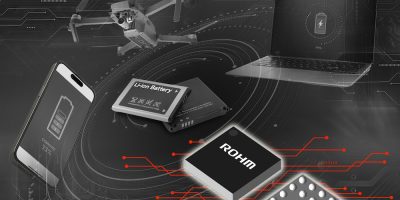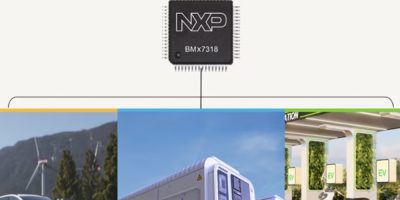ROHM has developed a 30V N-channel MOSFET — AW2K21 — in a common-source configuration that achieves an industry-leading ON-resistance of 2.0mΩ (typ.) in a compact 2.0mm × 2.0mm package.
With the rise of compact devices featuring large-capacity batteries, such as smartphones, the need for fast charging functionality to shorten charging times continues to grow. These applications require bidirectional protection to prevent reverse current flow to peripheral ICs and other components when not actively supplying or receiving power. What’s more, fast charging involves high current power transfer, leading smartphone manufacturers to demand stringent specifications for MOSFETs, including a maximum current rating of 20A, breakdown voltage between 28V and 30V, and an ON-resistance of 5mΩ or less.
In response, ROHM developed an ultra-compact low ON-resistance MOSFET optimised for fast high-power charging. The AW2K21 adopts a proprietary structure that enhances cell density while minimising the ON-resistance per unit chip area. Two MOSFETs are integrated into a single package, allowing a single part to support bidirectional protection applications (commonly required in power supply and charging circuits).
The proprietary structure also places the drain terminal on the top surface, unlike on the backside in standard vertical trench MOS structures. This enables the use of a WLCSP, which achieves a larger chip-to-package area ratio that further reduces ON-resistance per unit area. As a result, the new product not only minimises power loss but also supports high current operation, making it ideal for high-power fast charging applications despite its ultra-compact size.
For example, in power supply and charging circuits for compact devices, standard solutions typically require two 3.3mm × 3.3mm MOSFETs. In contrast, the AW2K21 can achieve the same functionality with a single 2.0mm × 2.0mm unit, reducing the footprint and ON-resistance by approximately 81% and 33%, respectively. Even compared to similarly sized GaN HEMTs, ON-resistance is decreased by up to 50%, contributing to lower power consumption and increased space savings across a variety of applications.
The AW2K21 is also suitable for use as a unidirectional protection MOSFET in load switch applications, where it maintains the industry’s lowest ON-resistance. At the same time, ROHM is further pushing the limits of miniaturisation with the development of an even smaller 1.2mm × 1.2mm model.






